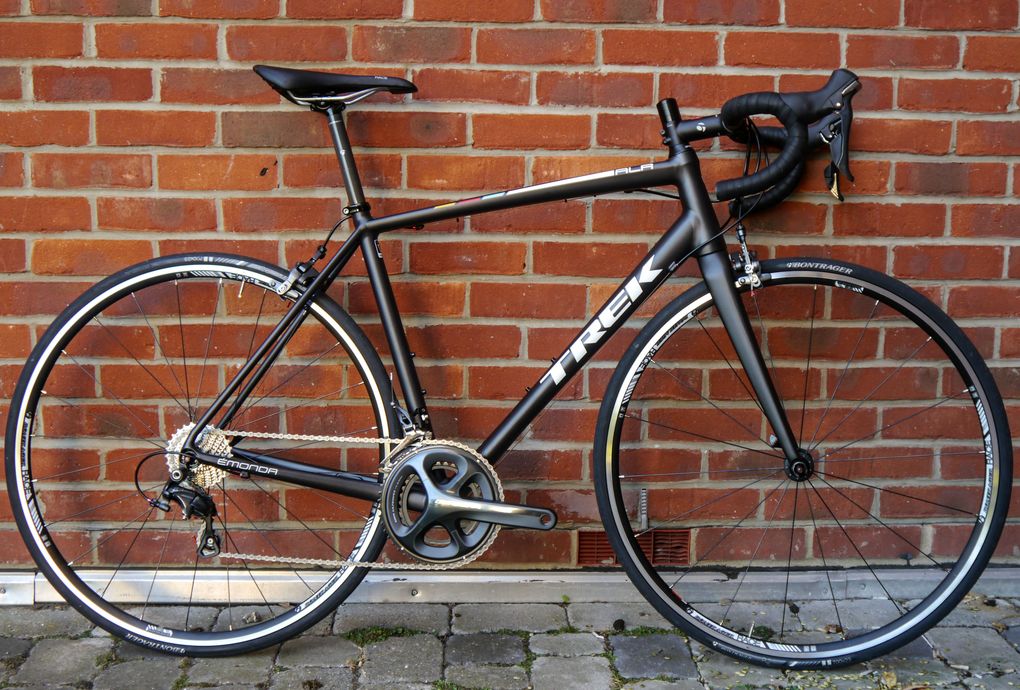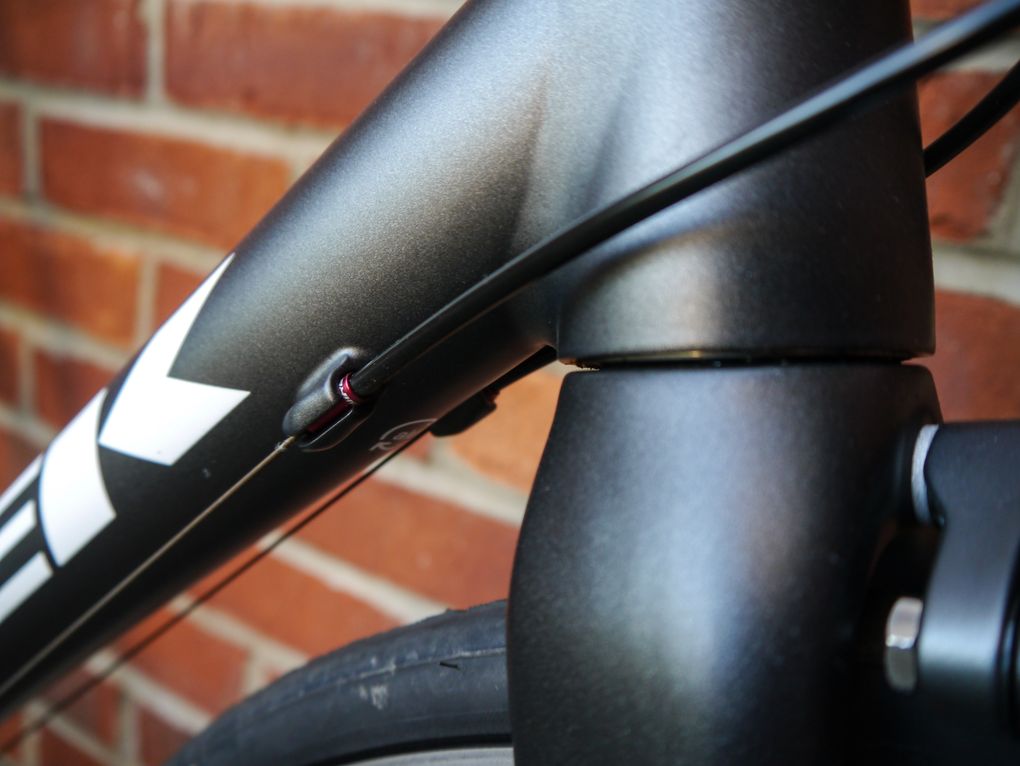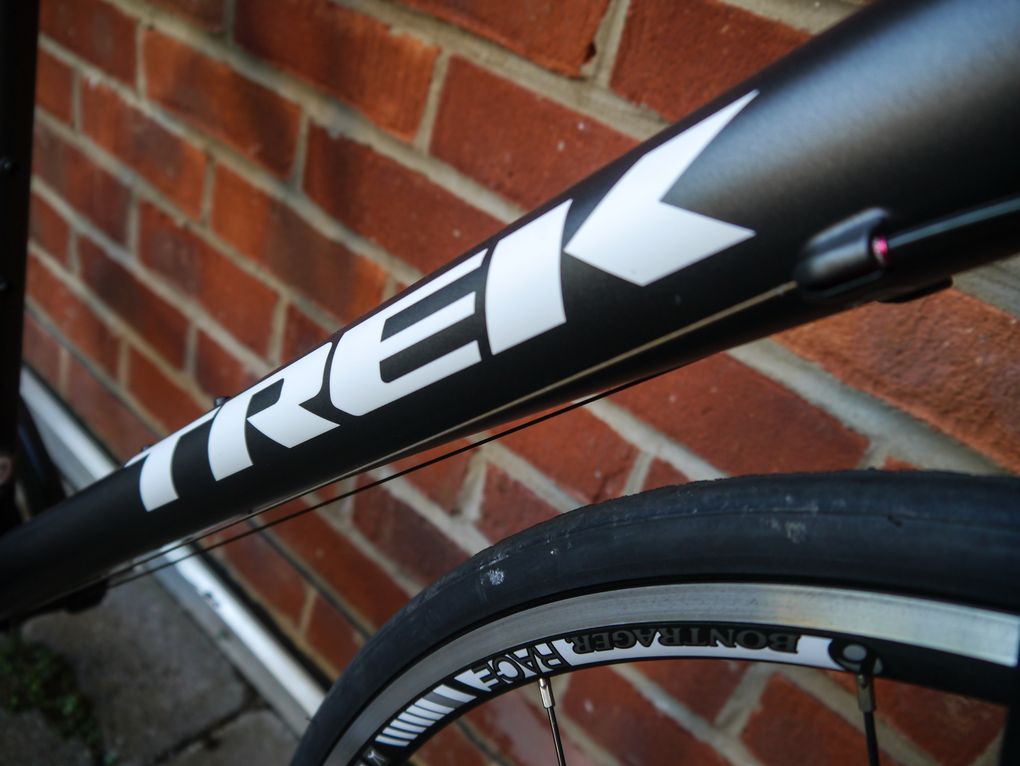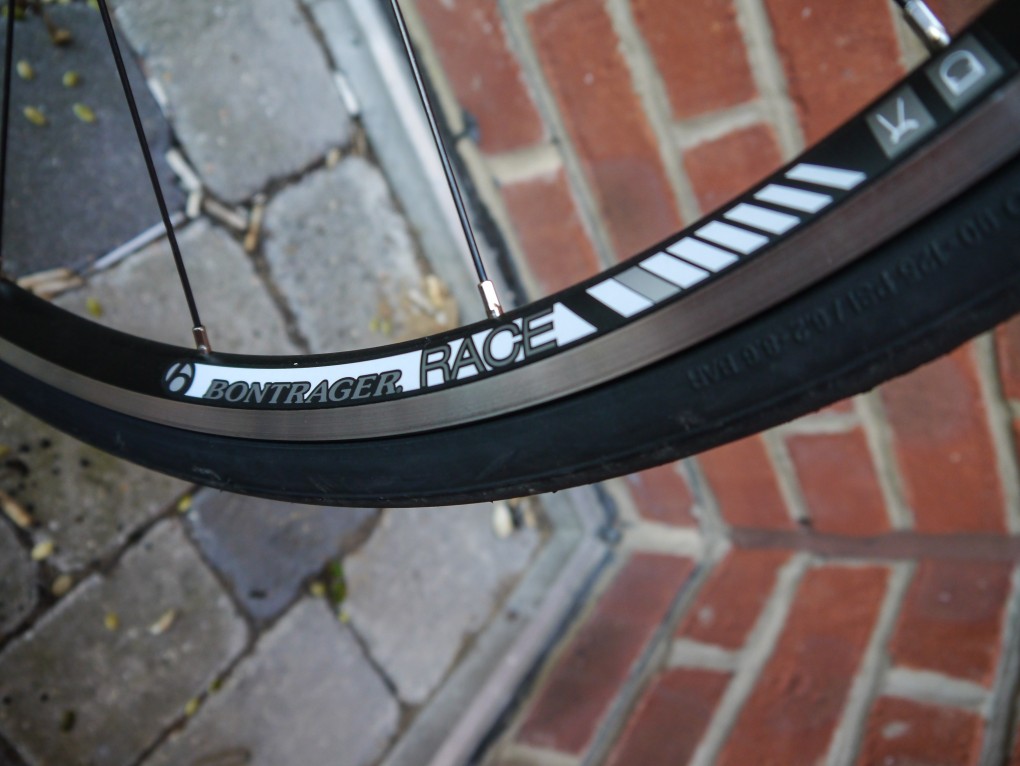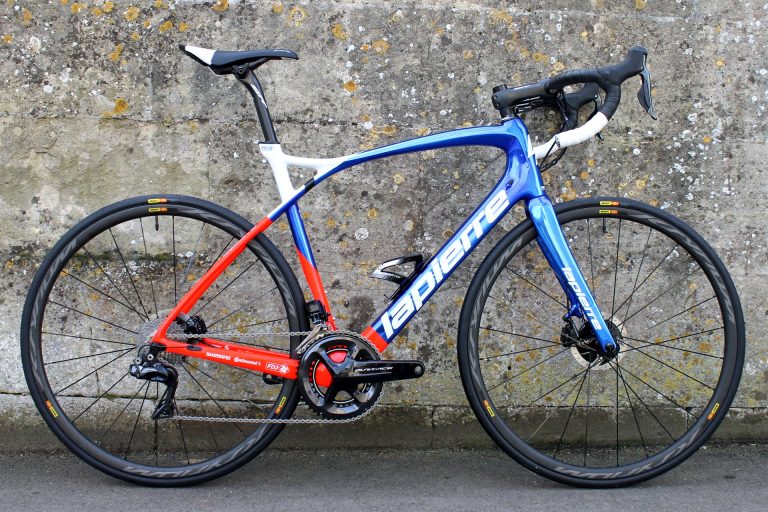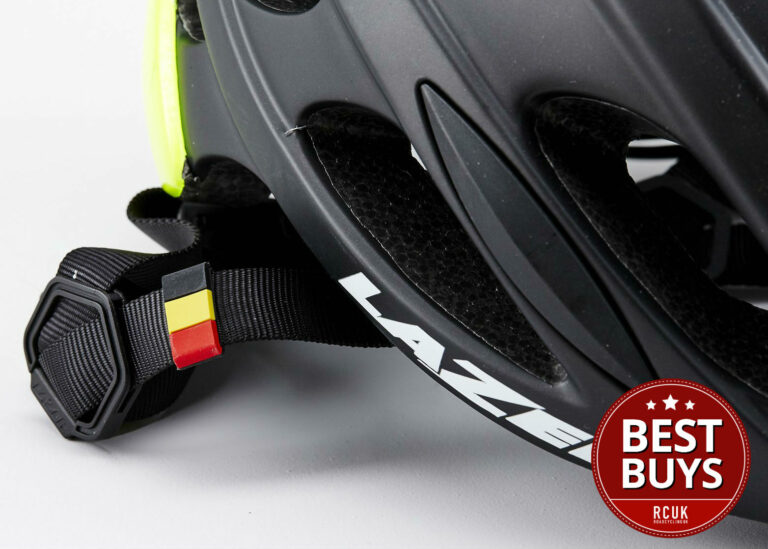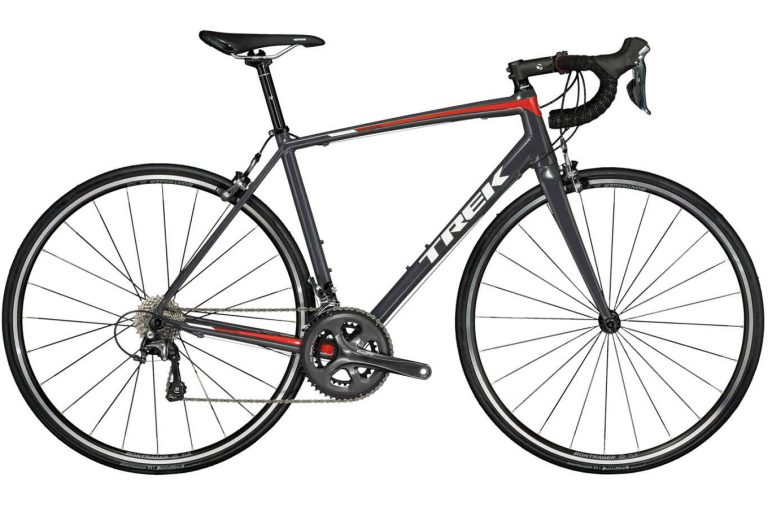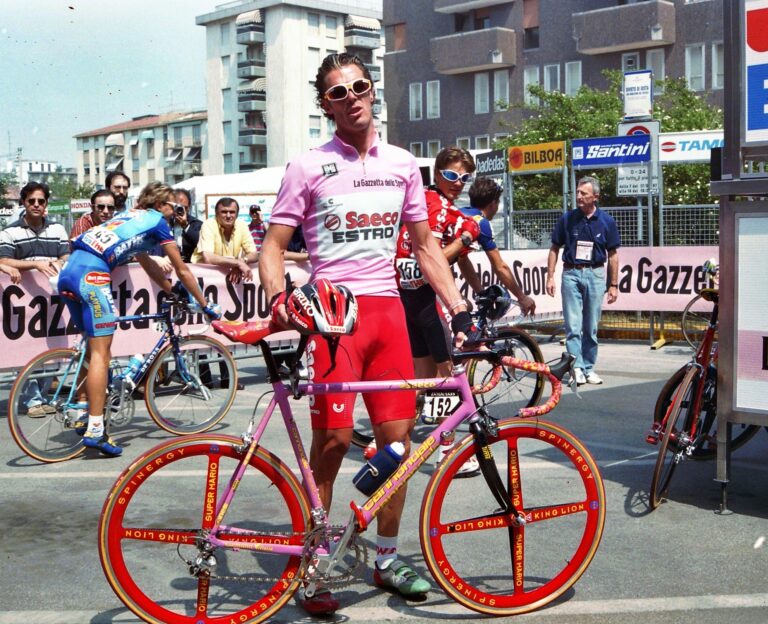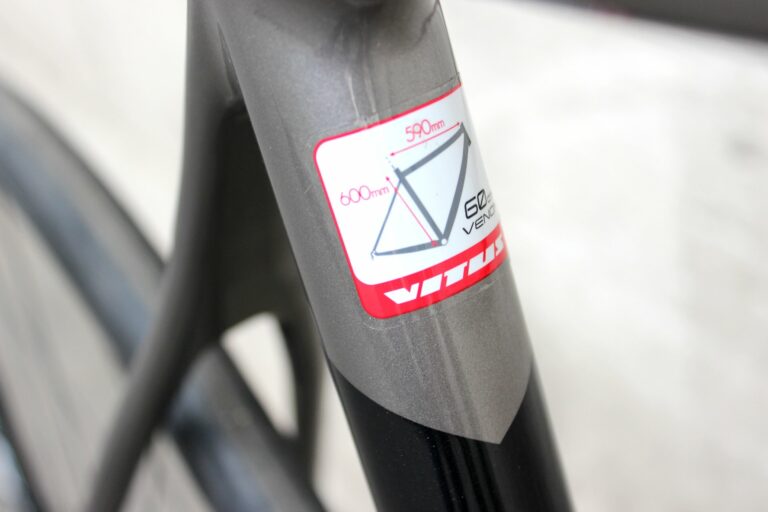As I mentioned in the first ride report, the part of the bike that I’d want to change as soon as possible would be the bars. I’ve ridden the Bontrager Race VR-C bars on a couple of bikes and I just don’t get on with them at all.
Even in my preferred 42cm width there’s something about the shape that makes them feel wide and ungainly, but it’s a small issue and it’s perfectly conceivable that others might try them to find the exact opposite.
Once I’d swapped them out, though, the bike felt even better at the front end, proving how important it is to feel comfortable in the cockpit of your ride. They also tip the scales at a hefty 310g, so that’d be a way to save some weight immediately if you were looking to build a super-light version of the bike.
The weakest part of the build is the wheels (and I know, we say this about most bikes). The Bontrager Race wheelset might be tubeless ready, but it’s about as basic as they come which definitely detracts from the ride quality.
Although Bontrager should definitely be applauded for bringing tubeless availability right down to the bottom of the price range, the ALR definitely deserves a better set of wheels than the £230 stock option.
Having said that, the basic wheels are specced as a very obvious way of keeping the RRP down on the bike as a whole, and as I said at the top, grabbing yourself the ALR 6 rather than the carbon SLR 6 would automatically save you £600 you could use to buy a really rather nice set of aluminium clinchers.
Price-wise, it’s pretty much spot on. A CAAD10 with Ultegra will set you back £1,699.99, though Canyon do manage to undercut that, with the Ultegra-equipped version of their Ultimate AL SLX coming in at £1,499.99 with a better set of wheels in Mavic’s Ksyrium Elite S.
